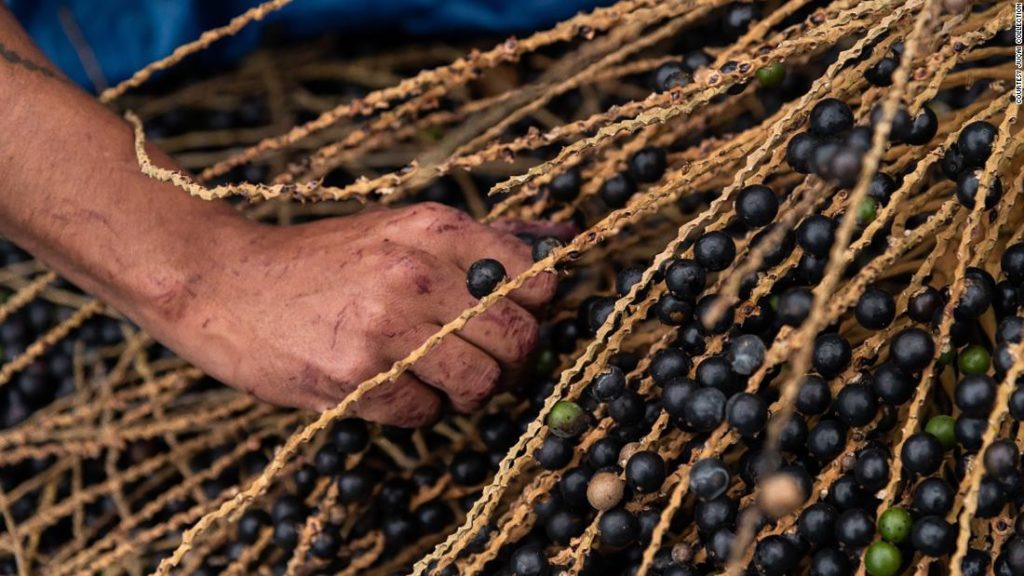But the juçara berry, which grows on a palm tree of the same name, is offering a lot more than antioxidants — it’s helping to restore Brazil’s devastated Atlantic Forest.
Founded in 2015, Juçaí works with a network of local farmers and buys juçara berries for its products, including smoothies and sorbets, says Bruno Corrêa, the company’s general manager.
“The idea from the start was to build a range of products that was not only good quality and nutritious, but also that created a positive, virtuous circle to preserve the tree,” he says.
Farming can help save the forest
That’s where Juçaí comes in. Through farming cooperatives, the company works with nearly 900 families in Espirito Santo State, and its reach is extending south into Parana State. Farmers plant new trees, or nurture existing ones, while Juçaí oversees logistics and provides the equipment needed to turn the berries into pulp and separate out the seeds — which are then planted.
Illegal cutting in the forest is still an issue, but harvesting berries offers a comparable income and is a “clear and straightforward” option for farmers, says Corrêa. The tree’s economic value incentivizes farmers to preserve it, he says, and that benefits the whole ecosystem.
“The tree is important not only in terms of forest coverage and how it protects the soil but also for the fauna, especially birds,” he says, adding that farmers leave a third of the berries on the tree during each harvest, to support wildlife.
Combined with reforested “corridors,” agroforestry zones can provide “stepping-stones” that help wildlife like butterflies and birds move between fragmented sections of the remaining forest, says Cullen.
Agroforestry also benefits communities, says Cullen. In Sao Paulo State, where he works, farmers grow coffee trees beneath the shade of the forest canopy. According to Cullen, biodiversity and canopy coverage have increased, while farmers’ incomes have grown by 26%.
Bitante says the type of sustainable farming Juçaí promotes benefits the environment and the economy. “It is essential to strengthen the link between the maintenance of biodiversity and society, valuing the standing forest and guaranteeing the protection of this beautiful biome.”
Berry nutritious
Juçaí hopes that creating a strong market for the juçara berry can help build a better future for the farmers and, in turn, the forest.
Certified organic and vegan, Juçaí currently sells its products in both supermarkets and specialized health food stores in Brazil, Chile and Canada, and hopes to expand into other markets. “People are increasingly aware of what they eat, both from a nutrition perspective as well from a sustainable one,” says Corrêa.
Since its launch, Juçaí has been responsible for keeping around 31,000 juçara palm trees standing, Corrêa says. For Juçaí, preserving the Atlantic Forest and its biodiversity is what drives the business.
“Juçara is the iconic tree of the Atlantic Forest,” he says. “The product only exists because of that sustainability mission.”
You may also like
-
Afghanistan: Civilian casualties hit record high amid US withdrawal, UN says
-
How Taiwan is trying to defend against a cyber ‘World War III’
-
Pandemic travel news this week: Quarantine escapes and airplane disguises
-
Why would anyone trust Brexit Britain again?
-
Black fungus: A second crisis is killing survivors of India’s worst Covid wave

